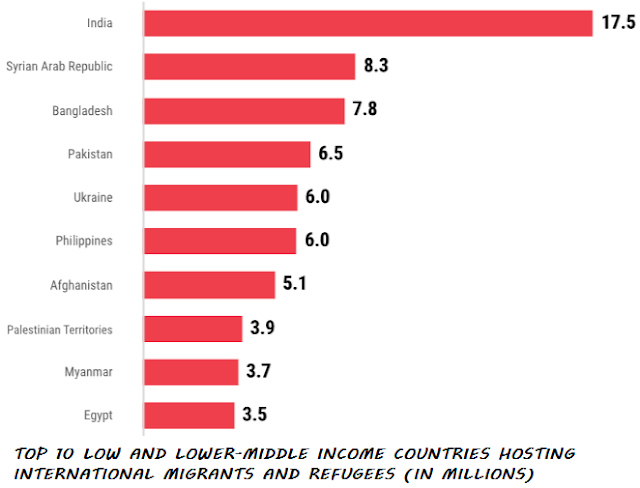By Rajiv Shah
A recent study, jointly carried out by the UN World Food Programme and the International Organization for Migration, seeking to explore the impact of Covid-19 and lockdown measures on migrant workers, remittance-dependent households and the forcibly displaced, has identified India as one of the major countries where Covid-19 has “exacerbated pre-existing grievances, stigmas and community divisions, resulting in increased discrimination against mobile and displaced population perceived as disease carriers.”
Such dynamics not only have an “impact on the identification of Covid-19 cases” but has also lead to “discriminatory service provision, growing intercommunal distrust, political violence or arbitrary measures, as well as rendering migrants afraid to access services”, the study, titled “Populations at risk: Implications of COVID-19 for hunger, migration and displacement”, says.
Referring to India in particular, the study underlines, “In India, the United Nations Special Rapporteurs on the right to housing and on extreme poverty have highlighted the stigmatization as ‘virus carriers’ of the more than 100 million internal migrant workers in the country.”
It adds, “The spread of rumours and disbelief in some communities about the pandemic, coupled with weak or non-existent inclusive and accessible information on Covid-19 transmission, may further expose vulnerable, minority and marginalized populations to the transmission of the virus.”
Noting how this has happened in several countries, the study, without referring to the Tablighi event in India, states, “Migrants are used as scapegoats as carriers of the virus and as a result, suffer exclusion and violence. In addition to the forced removals, fears about Covid-19 have led to migrants experiencing verbal and physical harassment, increased detention and movement restrictions.”
Coming to internally displaced persons (IDPs), the study says, across the world, “by December 2019, the total number of IDPs had reached its highest ever point and included 45.7 million people displaced as a result of conflict and violence and 5.1 million who remained displaced as a result of disasters, due to weather-related and natural hazards.”
Even as pointing out that almost all IDPs live in LMICs. five countries – the Syrian Arab Republic, Colombia, the Democratic Republic of the Congo, Yemen and Afghanistan – account for more than half of the 45.7 million IDPs who have fled conflict and violence, the study states, “The 5.1 million people who remained displaced due to disasters are distributed across 95 countries and territories; Afghanistan hosts the largest number, with 1.2 million IDPs who have fled drought and floods in recent years, followed by India (590,000) and Ethiopia (390,000).”
Suggesting how Covid-19 has affected international migration trend as also incomes, the study says, “A large number of South and Southeast Asian migrants have been forced to return to their countries of origin because of prolonged unemployment and ad hoc measures introduced by host countries. When borders were closed in response to the Covid-19 pandemic, India and Pakistan organized the repatriation of their citizens from the region in response to pressure from the Gulf cooperation Council l(GCC) countries.”
“In the United Arab Emirates alone, more than 200,000 Indian and 60,000 Pakistani nationals registered for repatriation”, the study says, adding, “Such migration movements may have had the unintended effect of driving transmission in areas with less capacity to provide testing, isolation and treatment, as well as increasing vulnerability for migrants during their journey and in their home communities.”
Suggesting how this may have affected remittances at home, the study states, India’s reliance on remittances has “fallen steadily over the past two decades along with their rapid economic growth”, yet it “continues to receive substantial remittance inflows.” Thus, in the South and South-East Asian countries, remittances sent to India stook the highest (USD 83 billion), followed by the Philippines (USD 35 billion), Pakistan (USD 22 billion) and Bangladesh (USD 18 billion).
Source- counterview.net,January 15, 2021






